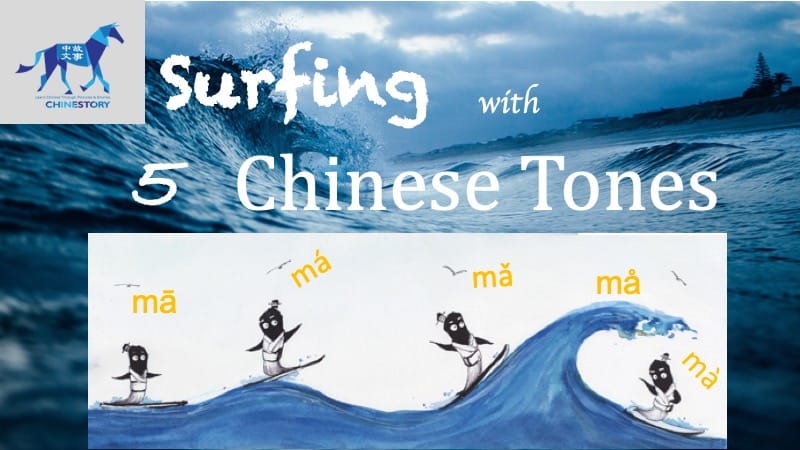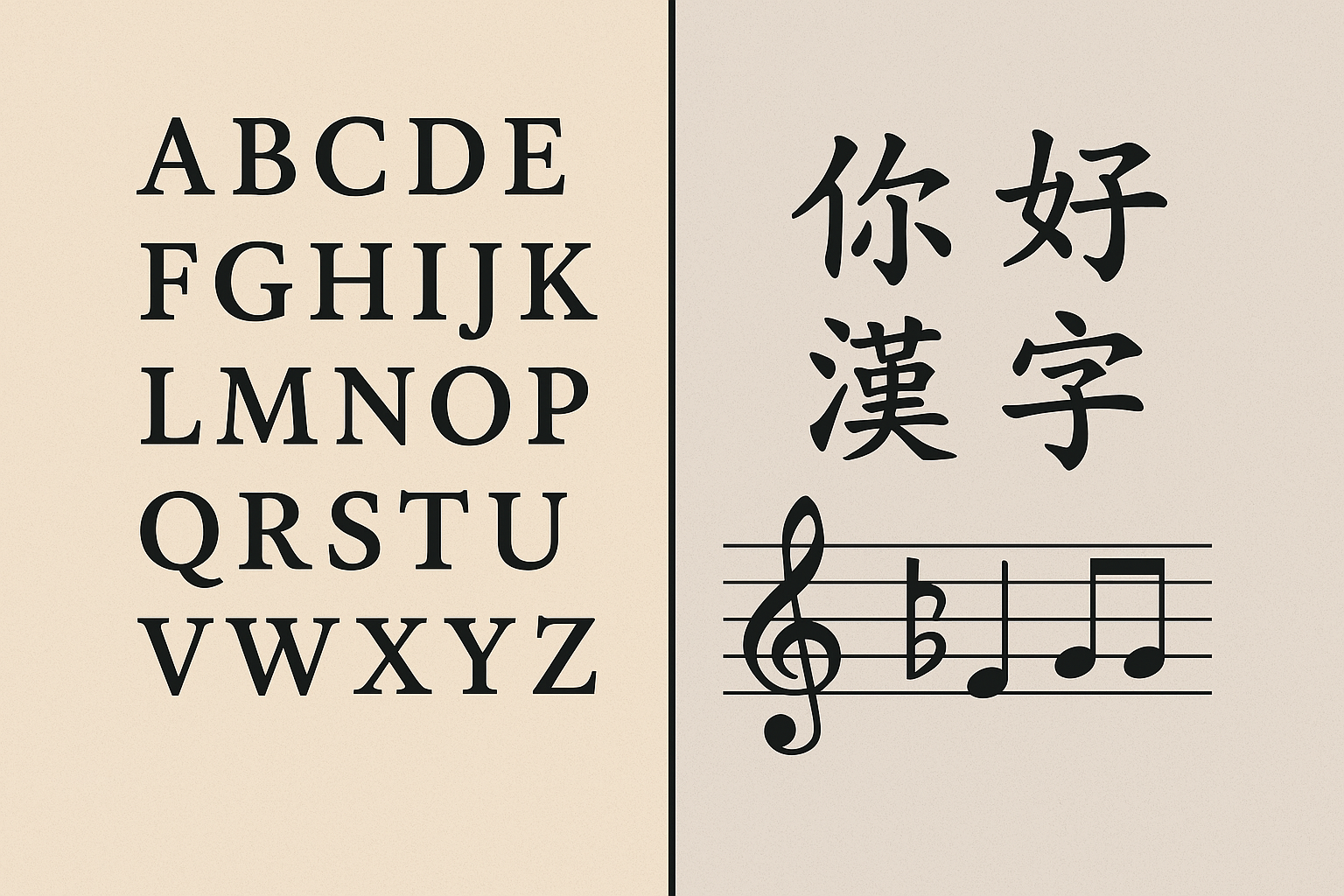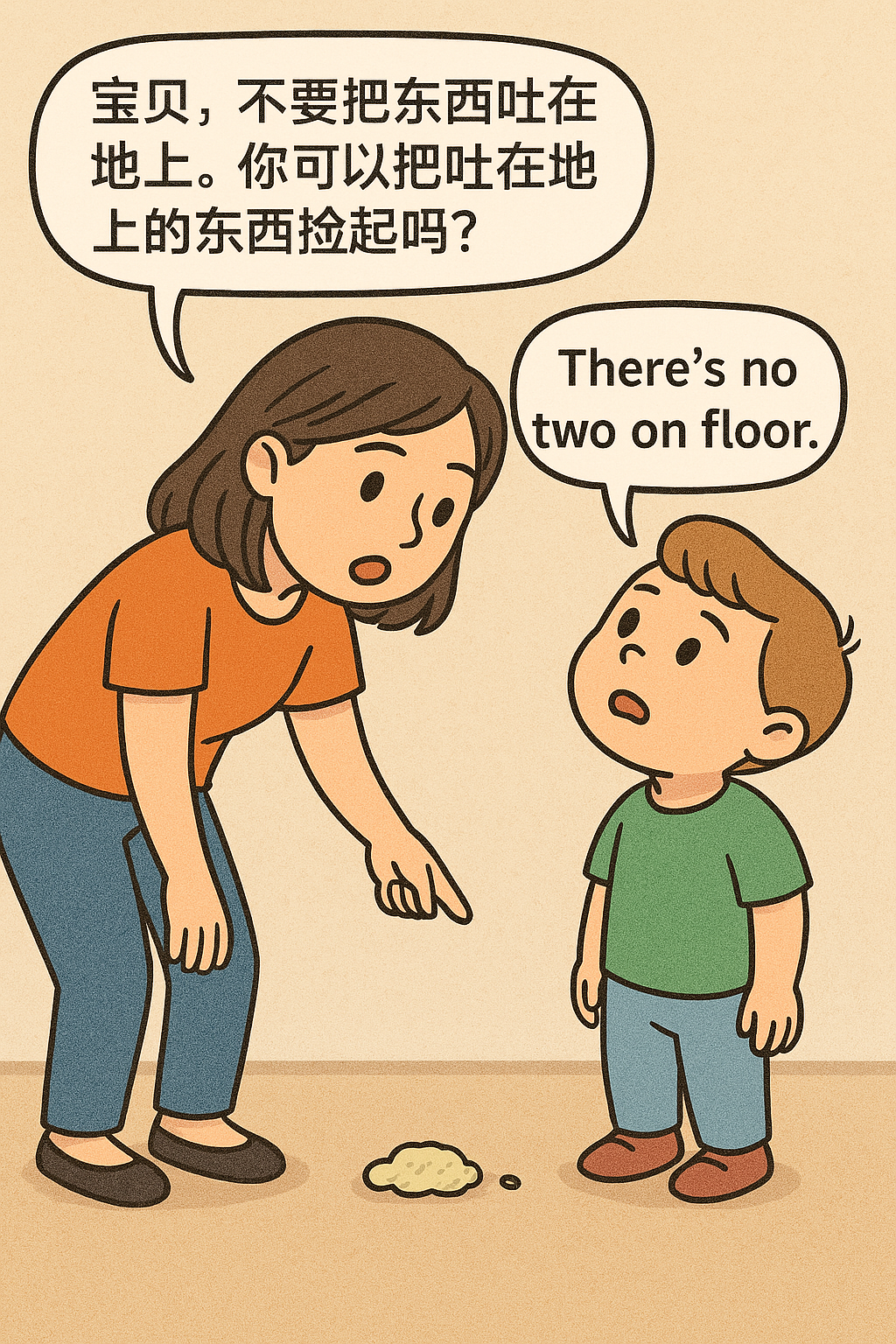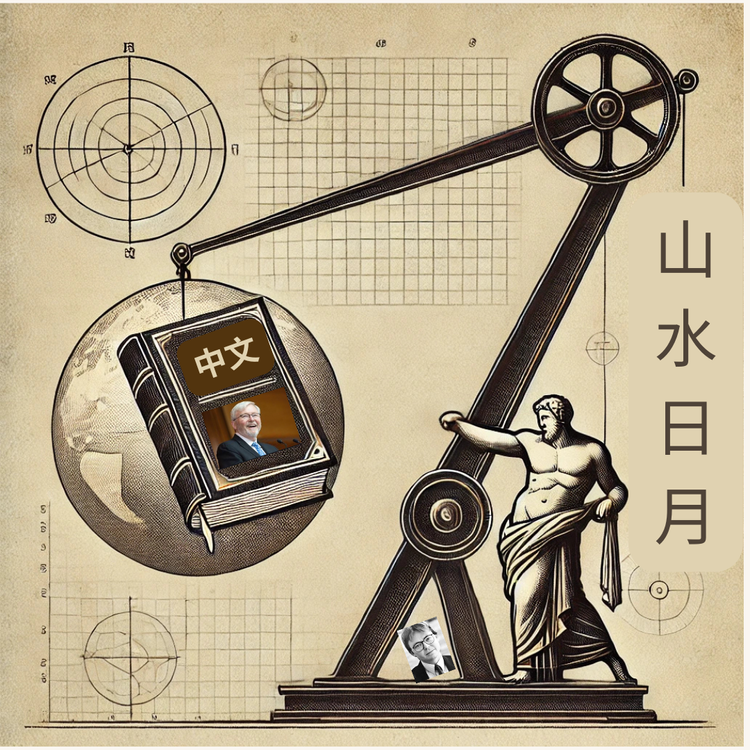Conquering Chinese through Sound, Rhythm & Rhyme - Insight 4 of 6

Yes, that’s a long title—but it saves you from a boring introduction. Let’s cut to the chase.
Insight #1. Not all languages are created equal—so they shouldn’t be taught or learned the same way.
Languages have fundamentally different structures, logic, and learning challenges, yet many teaching methods treat them as if they follow the same blueprint. That’s a HUGE and costly mistake. The most effective way to learn any language is to align with its linguistic nature rather than imposing methods designed for entirely different systems.
Yet, because Chinese language instruction in the Western world has historically lagged behind other major languages like Spanish, French, and German, it has often defaulted to traditional audio-lingual methods, originally designed for alphabetic languages. These methods heavily rely on oral drills and repetition, reinforcing language through pattern conditioning and mimicry. However, they fail to account for three distinctive features of Chinese characters: (1) phonetically, single syllabic and tonal; (2) morphologically, visual in nature and (3) their semantic associations, where meaning is often derived from radicals, components, and historical connections rather than phonetic cues.

The Comprehensible Input (CI) Theory, introduced by renowned linguist Stephen Krashen, shed light on how language acquisition works by emphasizing that learners acquire language best when exposed to meaning-driven, understandable input.
While CI provides a strong conceptual foundation, it lacks pedagogical specificity, particularly for languages with non-phonetic writing systems. CI explains what makes input effective but does not address how to structure learning when the primary challenge is recognizing and retaining thousands of visually complex characters.
In short, while existing linguistic theories provide valuable insights, effective language learning depends on methods that align with the unique nature of each language.
To teach and learn Chinese effectively, we must move beyond one-size-fits-all methods and embrace an approach that aligns with the way Chinese is inherently structured and optimally learned.
Insight #2. Mandarin is Single-Syllabic and Tonal Language—Utilize Its Natural Rhythm & Rhyme.
Each Chinese character is a single syllable, which gives Mandarin a built-in rhythm. But more importantly, learning through sound is the most innate capacity for human language acquisition—from infancy to adulthood.
Have you ever experienced lyrics from your favorite songs just coming out of your mouth automatically, without even thinking about it? Like:
🎵 Country roads, take me home, to the place I belong... 🎵
That’s the power of auditory learning, and it applies just as much to language acquisition as it does to music.
Now think about how babies acquire language long before they learn to read. Before they even understand words, their brains silently absorb trillions of neural patterns, attuning to the sounds around them. They don’t analyze phonetics or grammar—they listen, mimic, and internalize. This is the raw power of auditory learning, a process so deeply ingrained in the human brain that it operates effortlessly.
I witnessed this firsthand with my son when he was two years old. One day, while I was cooking in the kitchen, he was playing nearby and munching on some snacks. Suddenly, he spit it out onto the floor. I turned to him and said in Mandarin:
"宝贝,不要把东西吐在地上。你可以把吐在地上的东西捡起来吗?" (Baby, don’t spit food onto the floor. Can you pick up what you spit out?)
He looked down, then looked back up at me with an innocent face, shook his head, and said, "There's no two on the floor."

Looking at the earnest expression on his chubby face, in that flash-second, I had the biggest linguistic enlightenment of my life. My son had confused the Chinese word "吐" (tǔ, meaning "spit") with "two" in English—because his brain was making connections purely through sound. At the age of two, the only word he knew at that time that carried the /tu/ sound was "two", and he hadn’t yet established the connection between the /tu/ sound, the Chinese word "吐," and its meaning (spit).
That moment crystallized the fundamental truth about language acquisition: humans learn language through sound first.
This is why rhymes and rhythm-based learning are universal—they harness the brain’s natural ability to retain language through sound. Consider classic nursery rhymes like:
🎵 Hush, little baby, don’t say a word, Papa’s gonna buy you a hummingbird… 🎵 Dr. Seuss’s playful, musical language in:
🎵 The Cat in the Hat
🎵 Horton Hears a Who!
🎵 I do not like green eggs and ham. I do not like them, Sam-I-am!
🎵 You have brains in your head. You have feet in your shoes. You can steer yourself in any direction you choose. (Oh, the Places You’ll Go!)
Dr. Seuss mastered the art of musicality in language, creating stories that effortlessly stick in our minds.
Similarly, in Chinese, children grow up singing rhymes like:
🎵 两只老虎, 两只老虎, 跑得快, 跑得快 (Two tigers, two tigers, running fast, running fast)
🎵 一只没有眼睛, 一只没有尾巴, 真奇怪, 真奇怪 (One has no eyes, one has no tail, how strange, how strange!)
Tang poems also follow a highly rhythmic structure, making them easy to memorize. One of the most well-known, written over 1,300 years ago, is still recited by children today:
📜 《咏鹅》 (Ode to the Goose) – Luo Binwang
🎵 鹅,鹅,鹅, (Goose, goose, goose,) 🎵 曲项向天歌。 (Neck bent, singing to the sky.)
Like Dr. Seuss’s rhymes in English, this melodic structure helps children absorb language effortlessly.
Tonal confusion is one of the biggest challenges for Mandarin learners, but the key isn’t to overanalyze tones in isolation. Drilling and testing tone pairs like mā vs. mà might seem logical, but in practice, it often does more harm than good—despite the well-meaning efforts of many teachers. From my years of teaching, I can confidently say that this method doesn’t just frustrate students; it often leaves them staring at their notes, wondering if mā and mà are secretly conspiring against them. Still not convinced? Try this: Close your eyes and have someone play C and C# on the piano. Can you instantly and effortlessly tell them apart every time? If not, imagine how your students feel when asked to distinguish mā and mà out of context!
Here is a much, much more effective and learner-friendlier way to internalize tones– through rhythm and rhyme – the natural auditory exposure. Mandarin’s single-syllable structure creates a natural cadence, making it perfectly suited for learning through rhythm, rhyme, and song.
Instead of fighting against tones, work with the brain’s natural auditory strengths and let Mandarin’s rhythm guide you.
Because Mandarin is single-syllabic, it is uniquely suited for pedagogical tunes designed to reinforce correct tones. The compact, rhythmic nature of Mandarin syllables makes it easy to create learning songs, chants, and melodic drills that help learners absorb tones naturally.
Unlike English, where words often have multiple syllables and stress patterns, Mandarin’s single-syllable structure allows for clear, simple tone patterns. This means each syllable can be assigned a distinct musical contour, making it easier to internalize tones through melody and targeted repetition.
In my own teaching, I apply this principle on the very first day of each academic year when introducing numbers. Instead of teaching them in numerical order (1–10), I group them by tones to reinforce tonal patterns:
- First tone: 1, 3, 7, 8 (yī, sān, qī, bā)
- Fourth tone: 2, 4, 6 (èr, sì, liù) – all even numbers
- Third tone: 5, 9 (wǔ, jiǔ)
- Second tone: 10 (shí)
By grouping numbers by tone rather than sequence, students recognize tonal patterns immediately, rather than struggling to adjust to them later. This approach leverages natural repetition and melody, ensuring that correct tones sink in from day one, which I call…
“Marinate your ear in Mandarin”
Once students have learned the tone groups separately, I then combine all the numbers into a simple rhyme:
🎵 yī èr sān, sān èr yī, yī èr sān sì wǔ liù qī
🎵 (123, 321, 1234567)
At this point, I draw their attention to the melody—specifically, how the ending syllables align with the first tone. This subtle tonal reinforcement through rhythm and structure makes it easier for students to internalize correct pronunciation without conscious effort.
A Proven Method in the Classroom
This method isn’t just theoretical—it has been successfully applied by Ms. Jian Gao,a well-respected teacher in the North American Chinese teaching community.
She has published books on Mandarin rhythms and rhymes, and her beloved Mandarin rhyme "Clap Clap Hands" (拍拍手) is widely used on the first day of class as a teaser into the tonal nature of Mandarin.
I have seen classroom videos from all over the country showing students engaging in this hands-on, voice-out activity, which is essentially a Mandarin version of Rock-Paper-Scissors. It goes like this:
🎵 拍拍拍,拍拍手,拍拍手,大家都来拍拍手 (pāi pāi pāi, pāi pāi shǒu, pāi pāi shǒu, dàjiā dōu lái pāi pāi shǒu)
(Clap clap clap, clap your hands, clap your hands, everyone come and clap your hands!)
🎵 上上下下,左左右右,前前后后,里里外外 (shàng shàng xià xià, zuǒ zuǒ yòu yòu, qián qián hòu hòu, lǐ lǐ wài wài)
(Up up, down down, left left, right right, forward forward, backward backward, inside inside, outside outside!)
🎵 剪子石头布,剪子石头布 (jiǎnzi shítou bù, jiǎnzi shítou bù)
(Scissors, rock, cloth! Scissors, rock, cloth!)
Notice the Tones: All the ending syllables fall on the fourth tone—reinforcing its distinct falling pattern in a fun, engaging, and kinesthetic way.
Rather than having students mindlessly copy tone marks ten times in a notebook (Does writing down the tone mark actually strengthen your brain’s auditory signal processing?), and rather than teachers painstakingly forcing students to differentiate tonal pairs in isolation—completely removed from the natural rhythm of language—this method lets students sing 🎤, move 🏃, and engage with tones 🎵 in a way that sticks.
It’s a game, and because it’s fun, they naturally remember it—they couldn’t forget it even if they wanted to! In fact, many students have told me that the tune sticks in their heads all day long.
I tell them this:
“Use this one simple rhyme to calibrate your tones—treat it as your ‘tone tuner’."
Just like a musician must tune an 🎻instrument before playing, this Clap Clap Hands rhyme is your calibration tool for Mandarin pronunciation. Whenever you struggle to pronounce a fourth-tone word, try to find the correct "tone key" by using this familiar tune as a reference.
Mastering tones is not just about pronunciation—it is essential for clear communication.
Unlike in English, where mispronunciations can often be inferred from context, Mandarin is a tonal language, meaning that a change in tone changes the meaning entirely. If beginners fail to get the tone right, the meaning breaks down, and their message becomes unintelligible.
For example, in a listening comprehension exercise, one of my students once wrote down what she heard:
✏ 虫子的家在兔里 (chóngzi de jiā zài tù lǐ) (The bug’s home is inside the rabbit.)
What she should have written:
✔ 虫子的家在土里 (chóngzi de jiā zài tǔ lǐ) (The bug’s home is inside the soil.)
The only difference between 土 (tǔ, soil) and 兔 (tù, rabbit) is the tone, yet this small tonal error completely altered the meaning. When I asked her why she had written "rabbit" instead of "soil"—interestingly, the former is much more difficult to write—her response was immediate: she loves bunnies. In fact, she had practiced writing 兔 (tù, rabbit) nearly 40 times!
Since she hadn’t yet developed tone sensitivity, she defaulted the strongest neural pathway in her brain—兔 (tù, rabbit)—the word she both recognized best and felt the most affection for. She was doing exactly what my son did—relying purely on sound while disregarding meaning.
This is why tone mastery must be prioritized early in the learning process—without accurate tones, the listener cannot even guess the intended meaning. Left unchecked, tonal errors can become fossilized, making them much harder to correct later on.
💡 Do students have to memorize all the characters in these rhymes?
The answer is --“No”.
In the beginning, these rhymes and melodies are purely for training tones—not for memorizing characters. This is where many textbooks make a crucial mistake: they assume that everything written in the textbook must be learned in character form as well—an overwhelming and ineffective approach for beginners.
I can't emphasize enough these two points:
🔹 Learning tones and learning characters require two completely different systems.
🔹 Using the same method for both is a fundamental flaw in most curricula.
When it’s time to learn Chinese characters, students need an entirely different strategy—one that aligns with the visual and semantic nature of Chinese writing.
💡 How should Chinese characters be introduced effectively?
That’s exactly what I will address in the next installment piece. Stay tuned~
May the Horse Be With You 🐎✨



Comments ()